Chris Hector talks to Susanne Miesner
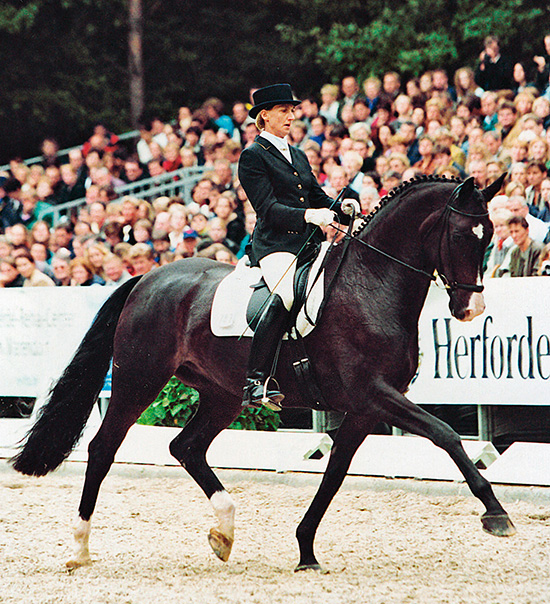
I love spending time with Susanne Miesner, she is a thinking horse person. She has trained, ridden and won, all the way from the Young Horse classes to Grand Prix, she is also keenly in demand as a lecturer and conducts seminars all around Europe – even Ireland. I caught up with her at the World Young Dressage Horse Champs at Ermelo. As usual, Susanne had something on her mind, and this time it was the weird and wonderful range of bits that are FEI approved…
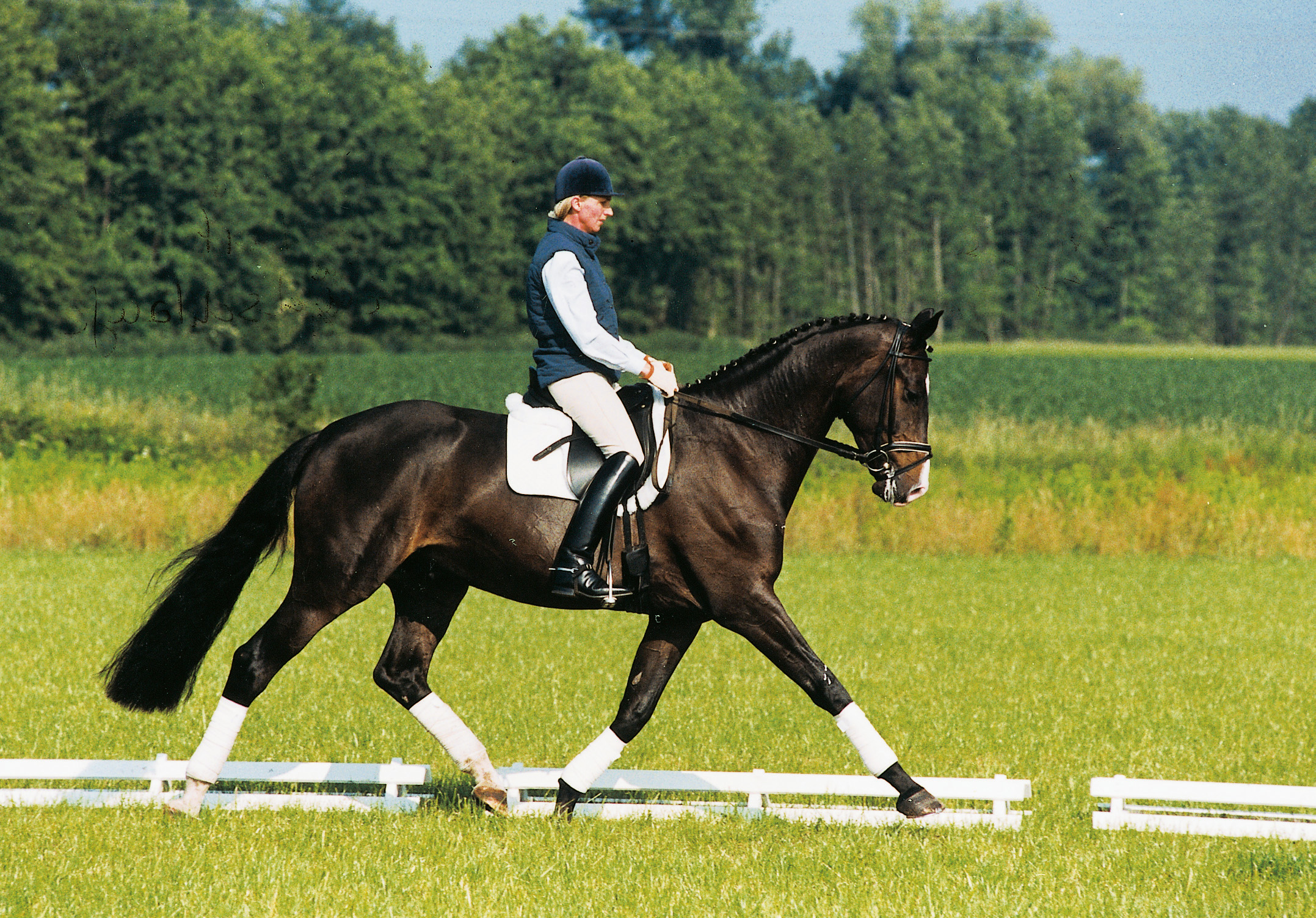
“My personal opinion is that we don’t need those things. We have such fantastic horses with such good conformation, such good top lines – the neck and throat latch – that you look at them in the stall, and they look like they are on the bit. The main thing for dressage is that the horse has to have a clear rhythm and they are supple, and the main key to bringing the horse to a higher level is connection – and I am not talking about Grand Prix – I’m talking about durchlässigkeit, even a horse at the first level has to have a good connection or you can’t get through with your half halts.”
And the whacko bits are not a help…
“Contact has nothing to do with the head of the horse or what you put in its mouth, true contact comes from the balance of the horse, it comes from the hind legs, from the way the back is working, the way the movement goes through the entire horse’s body. In the end, good connection comes from riding the horse from behind into the hand. If you look at all those bits and nosebands, it gives you the idea that you want to do something in front, in the horse’s mouth and on its head – holding the horse mechanically in an outline.”
“In the rule book we have the really good saying that first the horse has to stretch towards the bit. To progress the training, the horse really needs to have a connection, not a hard connection, but it really should step onto the bit, and then when it is really refined, the horse backs off the bit, just a little. So you still have a contact, the rider still has to have a little in his hand, it’s almost like a rubber contact. It’s flexible, when you go forward, the horse really needs to stretch forward, for lengthening or extension, even when a jumping rider goes to a jump, a really good jumping rider will keep the contact over a fence. Look at Marcus Ehning, he always has a positive connection to the horse, even over a fence.”
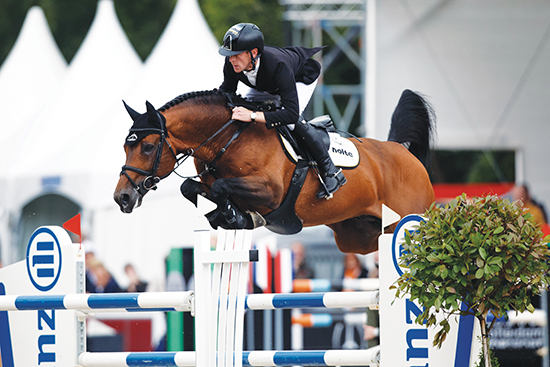
“I just feel that the more we publicise these bits, then the more the emphasis is on riding the horse mechanically, concentrating on the head, and forgetting the body.”
Susanne was also somewhat up in arms over the two fingers in the noseband suggestion…
“In Germany now we are having the discussion that the noseband should be no tighter than two fingers…”
That’s good…
“I don’t think so. It’s like the belt of your trousers, if it’s not just for fashion, then it should have some sense, it needs to be tight enough to really keep your trousers up, and if it is too loose, then it doesn’t make any sense.”
You think the noseband should be tight?
“Not tight, but there is a difference between being tight, and giving the horse some support around the jaw. We tried it at home, if you can fit in two fingers under the front of the noseband, then you don’t need a noseband any more – I’m not talking about on the side, but in the front, then the noseband is so loose, that you don’t need a noseband.”
“I think in a lot of cases, it is negative for the horse not positive. When the horse wants to chew a bit, if the noseband is so loose they have nothing to chew against. I am completely against those gadgets that get the noseband super tight – but it should lie comfortably around the horse’s jaw. Again it depends on each horse, and to make one rule, the noseband must have two fingers that’s silly – and whose fingers are we talking about, mine or that big old judge?”
“I do think its good that we have rules, and it is good that the bits and the nosebands are checked, but while rules are important, it is more important are the personal skills of the steward who does the checking, a good horse person can see if the horse is in pain, but I do not feel it is good for every horse to have a really loose noseband.”
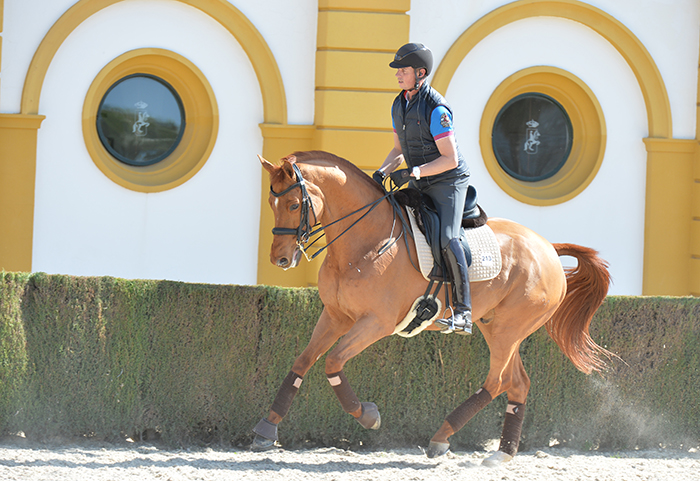
Although as Susanne discovered when she rode with Master Trainer, Jo Hinnemann, sometimes no noseband is the answer…
“I rode with Jo Hinneman for a long time and when we had horses that were really tight on the bit, or grinding their teeth, he would completely take the noseband away. We had a horse in my barn a few weeks ago that was grinding its teeth and we completely took the noseband away and just rode in a normal snaffle, and it worked. It gives the horse the chance to really find out the way he should use his jaw. But you cannot show a horse without a noseband, and in my personal opinion, a firm noseband is best.”
“With bits, I always refer back to Jo Hinneman, and he always said, a bit is so uninteresting – and Klaus Balkenhol says this too – if you are a good enough rider you can ride a horse in a plain snaffle, if the horse is trained well. The horse should be in self carriage and the bit is just a little part of that.”
“There are bits that are supposed to be more designed for how the horse’s mouth is shaped, or how the jaw is shaped – but I don’t see any reason why the horse should be better in self carriage in one of these bits, because the self carriage doesn’t come from the bit. The self carriage comes from how the horse accepts the half halt.”
“What a lot of people don’t understand, is that in a good half halt, the horse should pick up the half halt by itself from the bit. A lot of people when they talk about half halts, they talk about what you do with your hands, but it is not about hands. With a really well ridden horse, you push the horse onto the bit, then the horse himself steps a tiny bit back from the bit, so it picks up the half halt by itself. The horse backs off a little, and then comes more under with his hind legs, and goes in even better self carriage. For these reasons, I don’t see why riders want to put sharper bits into their horses’ mouths.”
“I’ve made a lot of mistakes in my life, and when I was younger I tried different bits, and always there was an immediate effect, and on the first day you said wow! great! Then three days later, it wasn’t great at all.”
“Especially in jumping, we have the weirdest kind of bits, unbelievable, but I believe a good rider, who rides his horses from the driving aids into the hand, can use a different bits once in a while, but just for a short time. I’m not a jumping rider but when they have to go over a 1.50m course, with a triple at the end, maybe for some horses they need not sharper bits, but different kinds of bits, but for dressage, our old traditional bits are fantastic, and if you are a good rider, you don’t need anything else..
Looking at the riding at the World Young Horse Championships, are we seeing good riding?
“I really must say that in general the riding has got much better. There are a lot of people, and you were one of them, with others like Jan Tönjes and Klaus Balkenhol, Gerd Heuschmann, myself, all fighting for at least ten years and the result has been fantastic. You hardly see Rolkur any more, it took a long time but now you very seldom see real Rolkur.”
“Good riding starts with good contact, with the feeling that you can go forward any time, and the horse is really stretching with the bit to the front. I really believe that if you don’t have a really good connection, then you don’t get true impulsion and if you don’t have really true impulsion, you don’t have any straightness in your horse and if your horse is not straight, it cannot truly collect itself – it is just functionally not possible.”
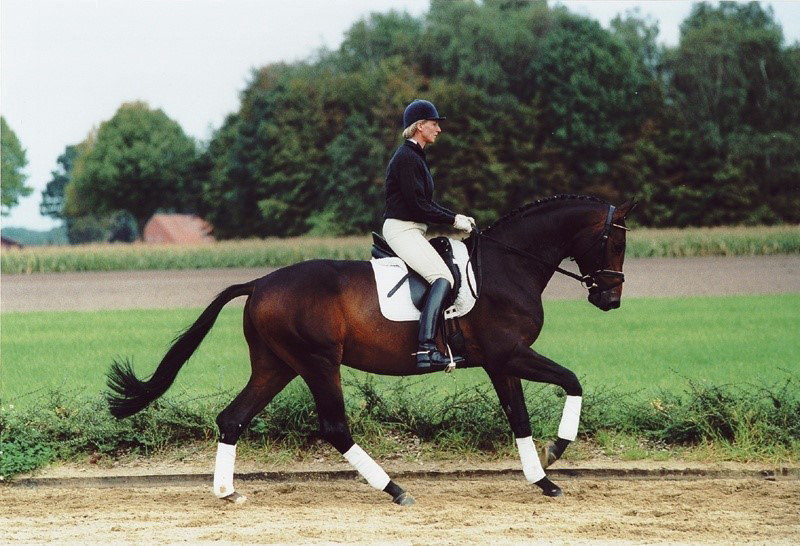
“You can ride little tricks, but for the true collection, when the horse is really on your seat, and you can go forward with your hands, and the horse stays in self-carriage, then you have collection and connection, and connection is more the totality of horse and the rider, than just the hand and the mouth. Some horses just have a good connection by nature, and especially with the young horse, you have phases where the horse is maybe growing behind and has problems with his balance, and then connection is not easy. Some others just have a great connection, and there are others that struggle, and it is like with children, you have to say, clean your room now! There is always a variation, but the feeling of the rider and the trainer for where the horse’s comfort zone is to be found, that is crucial because that is what we are doing, putting the horse into a balance where he is comfortable with what we ask.”
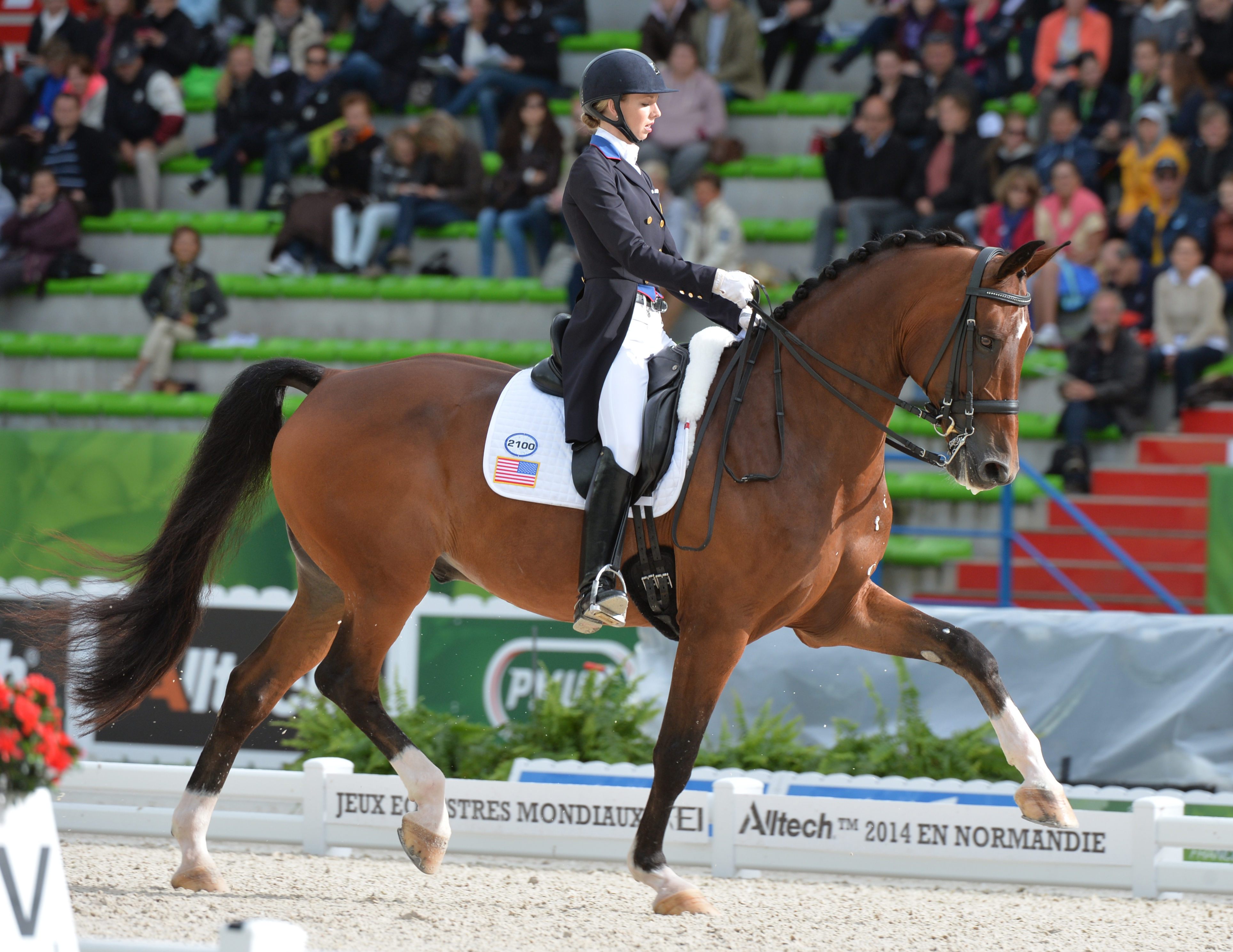
De Niro and Sandro Hit, or you can choose from young stallions by them, whatever suits your mare.
Plus you can breed to them here in Australia Go to www.ihb.com.au for more information
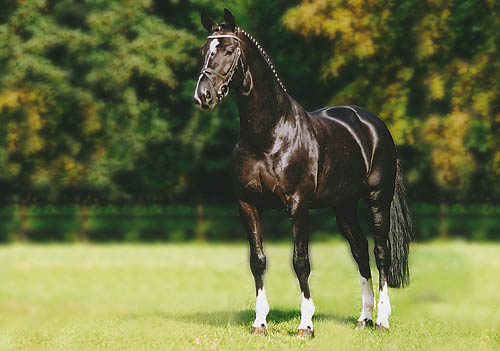
De Niro
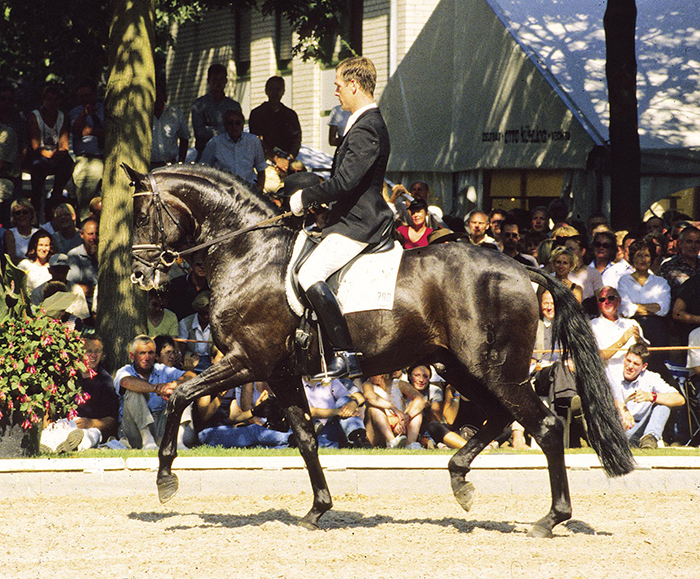
Sandro Hit


i had a wonderful time riding with Nuno Oliviera years ago. Now I have the TeleRein C IT which tells the rider how much weight they are putting on their horse’s mouth. Traffic lights send a message from the poll. Green is ideal, around 600gms to 1kg, then Yellow, to 1.5kg, then Orange to 2.9kg, then Red, 3kg upwards……C It on TeleRein website.
Wonderful photos of correct horses (pole highest, connected and through, impulsion, etc.) how refreshing. But I don’t agree that rolkur is gone. It has just morphed into a different variation of improper neck positioning/riding which is just as injurious to the horse as the “old” form.
What a fabulous article!! I absolutely love and endorse every word…..
Chris Hector is a phenomenon! He’s the only English-language writer I know of consistently producing rigorous journalism on correct training methods. He has the credibility and the connections to bring this kind of content to the reader over and over. Chris – I worship you! If you find yourself in Los Angeles my trainer and I would love to take you to dinner, you are a hero!
Terrific reinforcement. This is what I try to instill in my students. It is all about the riding and not the gadget
Great interview, and a brilliant, articulate, no B.S., article. The title could be: “Susan Meisner; Keeping it real!”.
Susan and The Master- George Morris would be two people, that could sort out the dressage riders, and the jumpers in one fell swoop… And hopefully trickle down to the eventers.
This article reinforces what I drill into my students; “legs put the horse on the bit…not hands!” And; “horses stretch their necks to the bit- not shorten their necks! And: ” Legs push the horse into you hand…! Hands that pull the nose in a stop the back legs…!)”
Bravo Susan Meisner. And yes, thank you to Chris for bringing the real truths of riding correctly to the fore.
Hi you all,
I have always believed and felt on the horseback, that what I said in this article is not only correct, but for sure the best animal wellfare.
But what really made me believed that my points right, was George Morris on the Global Dressage Forum 2 years ago.
He was brilliant!!
Thanks to Chris and his lovley wife Roz for this article, Susanne
Why is this written over and over, and why is it hard to understand for many riders today?
BECAUSE HORSES TODAY ALMOST IN GENERAL IS STUCK ON THE FOREHAND FROM STANDING BACKWARDS ON THEIR FEETS – FROM THE MODERN WAY OF TRIMMING!
And then they are impossible to ride into self carrige, as they are physical limited.
More information on the fb-page,
HOV&Häst i Balans.
Hopefully this classic knowledge can bring understanding, as It explains the common problems in riding, as the problems with the ortophedic health of the horses today. .